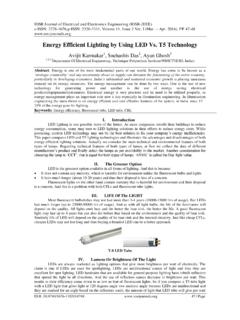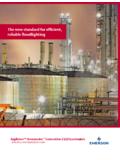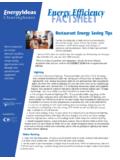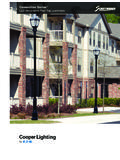Transcription of 5 Lighting technologies - Lighting Unit - Aalto University
1 5 lighting technologies 91 Chapter 5: Lighting technologies Topics covered 5 Lighting 93 Introduction .. 93 Light sources .. 94 94 Lamps in use .. 96 98 Incandescent 98 Tungsten halogen lamp .. 99 Fluorescent lamps .. 100 Compact fluorescent lamps (CFL).. 101 High Intensity Discharge lamps (High Pressure).. 103 Mercury Lamps .. 103 Metal halide lamps .. 103 High pressure sodium lamps .. 104 Electrodeless 105 Induction lamp .. 105 Compact fluorescent lamps (electrodeless) .. 105 106 Ballasts .. 106 Comparison of the electro-magnetic-ballasts and electronic ballasts.
2 108 Transformers .. 108 Starters .. 110 Dimming .. 110 Solid-state Lighting .. 111 Light-emitting diodes (LEDs).. 111 Operation principle and light generation .. 111 LED characterization .. 113 OLEDs - Organic light-emitting 117 LED 118 LED dimming and control .. 120 LED roadmaps .. 122 5 lighting technologies 92 Trends in the future in light 123 Electroluminescent light sources .. 123 Discharge 124 124 124 Definition of a 125 energy aspects .. 126 LED 127 Network aspects .. 128 Description of phenomena.
3 128 Risks and 131 Hybrid Lighting .. 132 132 energy savings, Lighting quality and 133 Hybrid Solar Lighting (HSL).. 133 Lightshelf systems .. 133 Lightpipes .. 133 Summary .. 134 References .. 134 5 lighting technologies 935 Lighting technologies Introduction Artificial Lighting is being used more and more in the world. The usage is quite non-homogeneous. In developing countries, we can still find a widespread use of fuel based Lighting but nowadays the situation is changing and the demand for electric based Lighting is growing.
4 Electric Lighting consumes about 19% of the world total electricity use. So, we should remember and consider that the improvement in energy efficient Lighting will also be helpful for the progress in developing countries. Every change in technologies , in customers consumption behaviour, even in lifestyle, has influences on global energy consumption and indirectly, on environment. Therefore, energy saving in Lighting , and the methods of achieving this goal should be considered at different levels (state, region, town, enterprise) and by supranational organisations, too.
5 People stay in indoor environment for most of the day. Characteristics of light in indoor environment are much different than that of natural outdoor environment. On the other hand people do not stop activities after sunset. The artificial Lighting has therefore impact on their well-being (see also the visual and non-visual aspects of light in Chapter 3). The needed artificial light has to be provided in energy efficient and environmentally conscious way. It is important to search for the technological solutions which meet human needs with the lowest impact on the environment during operation, when most of the impacts take place.
6 The environmental impacts also include production and disposal of lamps, and related materials. Artificial Lighting is based on systems: lamps, ballasts, starters, luminaires and controls. Ballasts are needed for discharge lamps to connect the lamp to the mains. Lamps, ballasts and starters are mounted in the luminaire with the wiring and lamp bases, reflectors distribute and redirect the light emitted from the lamp and louvers shield the user from glare. Control systems interact with the building where they are installed.
7 This means that the spider net of interactions and impacts is related with the architecture of the building (shape, space orientation etc. have influence for daylight contribution), with the supply network and with the different equipment installed, the heating, ventilation, cooling or electronic devices. Last, but not least, Lighting systems are made for human beings who have individual needs and behaviours. User habits can be supported by automatic controls (for example, occupancy sensors), but the user habits cannot be overridden, and here education plays a major role.
8 First of all, the perfect Lighting system offering the best solution for every application does not exist. Every technology, including the more innovative and trendy ones, has its own limitations and its full potential is mainly related to specific application field. Furthermore, the best lamp, if used with poor or incompatible luminaire or ballast, loses most of its advantages. Combining good lamp, ballast and luminaire in a wrong installation may not meet the user needs or provide Lighting service in an inefficient way.
9 Combination of a good Lighting system in a well designed installation takes strong advantage from control devices, to drive the Lighting system according to, for instance, on daylight availability and occupancy. In the case of new buildings the integration of daylight is important in order to reduce the energy consumption. 5 lighting technologies 94 To summarize, energy savings / efficiency and economics are dependent on: Improvement of Lighting technologies Making better use of available cost-effective and energy efficient Lighting technologies Lighting design (identify needs, avoid misuses, proper interaction of technologies , automatic controls, daylight integration) Building design (daylight integration and architecture) Knowledge dissemination to final users Knowledge dissemination to operators (designers, sellers, decision makers)
10 Reduction of resources by recycling and proper disposal, size reduction, using less aluminium, mercury, etc. Life Cycle Cost Assessment LCCA In this chapter an overview is given for the current technologies of light sources, luminaries, and ballasts. Their potential is illustrated and the trends of the most promising ones are described. Integral Lighting systems utilizing daylight together with electrical Lighting systems and its control are also presented. Light sources Overview Following characteristics are to be considered when choosing a lamp for an application.




